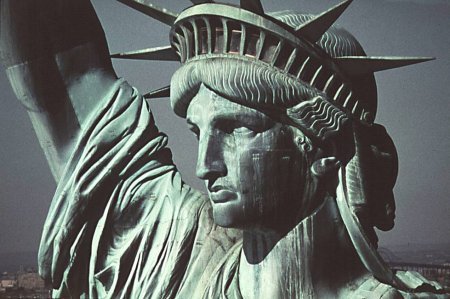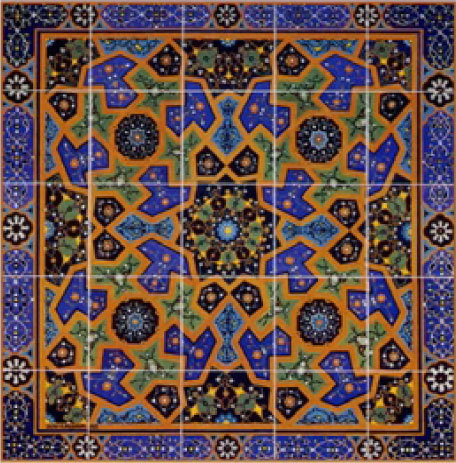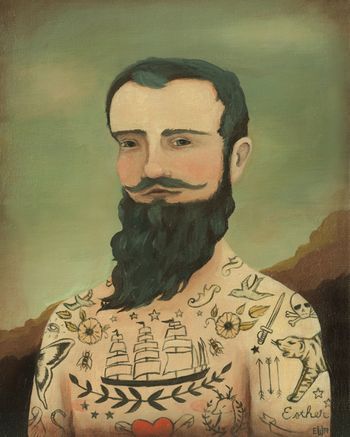There is a difference in the aging of men and women which I hope one day we can eradicate. The aging of a man is accepted. He can age nobly like a prehistoric statue, he can age like a bronze statue, acquire a patina, can have character and quality. We do not forgive a woman aging. We demand that her beauty never change. The charming, beautiful women I have known, is it because their aging is frowned upon that they do not age nobly?
Italian women age nobly, Mexican women. The culture accepts it. They cease to wear dresses which clash with their bodies and faces. The charm of voice, laughter, the animation remain, but because we have associated femininity with silk, satin, lace, flower, veil, a woman is not allowed to acquire the beauty of a stone piece. […] a  passing into stone and leather, as if to acquire a statue’s quality. The slightest wilting is tragic in women because we make it so. A woman’s skin has to rival the flower, her hair has to retain its buoyancy, aging does not constitute a new kind of beauty, hierarchic, gothic, classical. She can only seem incongruous, condemned, doomed among the silks and the flowers and the perfumes and the chiffon nightgowns, the white negligées. Why can she not efface her rivalries behind black gowns as the Greek women, as the Japanese women do? It is the rivalry among the elements we associate with women which prevents the transition to some other kind of beauty. Caresse Crosby gave me a shock when she appeared in a bright deep red dress, a buoyant dress, frou-frou, walking lightly on very high heels, but then her face appeared like a ruined mural, eroded with time. The powder and the lipstick did not adhere to its dryness but seemed about to crumble off. The sadness was that not all of Caresse aged simultaneously; her voice and laughter were younger […]
passing into stone and leather, as if to acquire a statue’s quality. The slightest wilting is tragic in women because we make it so. A woman’s skin has to rival the flower, her hair has to retain its buoyancy, aging does not constitute a new kind of beauty, hierarchic, gothic, classical. She can only seem incongruous, condemned, doomed among the silks and the flowers and the perfumes and the chiffon nightgowns, the white negligées. Why can she not efface her rivalries behind black gowns as the Greek women, as the Japanese women do? It is the rivalry among the elements we associate with women which prevents the transition to some other kind of beauty. Caresse Crosby gave me a shock when she appeared in a bright deep red dress, a buoyant dress, frou-frou, walking lightly on very high heels, but then her face appeared like a ruined mural, eroded with time. The powder and the lipstick did not adhere to its dryness but seemed about to crumble off. The sadness was that not all of Caresse aged simultaneously; her voice and laughter were younger […]
The sadness was that the aging of woman is like crushed satin, wilted flowers, while that of man is more like that of architecture, as if the old belief that we love men for  their character and women for the dewy, ephemeral quality we call beauty were still enforced.
their character and women for the dewy, ephemeral quality we call beauty were still enforced.
The Diary of Anais Nin, Volume 6, 1955-1966
This was written in 1956, but the circumstances are worse today, I think. Also, “ruined mural” is such a startling moment, fantastic image to evoke caked-on make-up, red lipstick on wrinkled lips.

 I have now known community living. But I am still convinced that these people who are so proud of giving birth and raising three children are giving less to the world than Beethoven, or Paul Klee, or Proust. It is their conviction of their virtuousness which distresses me. I would like to see fewer children and more beauty around them, fewer children and more educated ones, fewer children and more food for all, more hope and less war. I was not proud at all of having helped three children with faces like puddings or oatmeal to live through a Sunday afternoon. I would have felt prouder if I had written a quartet to delight many generations.
I have now known community living. But I am still convinced that these people who are so proud of giving birth and raising three children are giving less to the world than Beethoven, or Paul Klee, or Proust. It is their conviction of their virtuousness which distresses me. I would like to see fewer children and more beauty around them, fewer children and more educated ones, fewer children and more food for all, more hope and less war. I was not proud at all of having helped three children with faces like puddings or oatmeal to live through a Sunday afternoon. I would have felt prouder if I had written a quartet to delight many generations. We in ancient countries have our past – we obsess over the past. They, the Americans, have a dream: they feel nostalgia
We in ancient countries have our past – we obsess over the past. They, the Americans, have a dream: they feel nostalgia  about the promise of the future.
about the promise of the future.  We die containing a richness of lovers and tribes, tastes we have swallowed, bodies we have plunged into and swum up as if rivers of wisdom, characters we have climbed into as if trees, fears we have hidden in as if caves. I wish for all of this to be marked on my body when I am dead. I believe in such cartography – to be marked by nature, not just to label ourselves on a map like the names of rich men and women on buildings. We are communal histories, communal books. We are not owned or monogamous in our taste or experience. All I desired was to walk upon an earth that had no maps.
We die containing a richness of lovers and tribes, tastes we have swallowed, bodies we have plunged into and swum up as if rivers of wisdom, characters we have climbed into as if trees, fears we have hidden in as if caves. I wish for all of this to be marked on my body when I am dead. I believe in such cartography – to be marked by nature, not just to label ourselves on a map like the names of rich men and women on buildings. We are communal histories, communal books. We are not owned or monogamous in our taste or experience. All I desired was to walk upon an earth that had no maps.